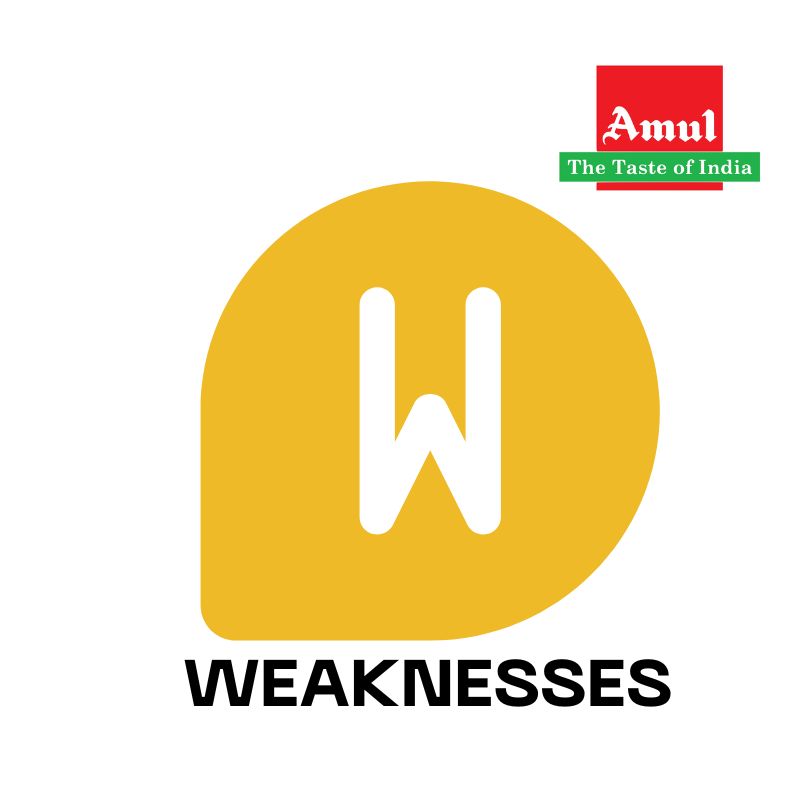PhD Dissertation and Research Writing : Strategies for Doctoral Candidates
PhD Research Writing Services
Your Secret to Academic Success
Embarking on a PhD journey is a monumental step in any academic career. It represents years of dedication, intellectual exploration, and the pursuit of original contributions to your field. While the idea of earning a doctorate may seem glamorous, the reality involves intensive research, countless revisions, and the challenge of crafting a dissertation that meets the rigorous standards of academia. This is where tools and platforms like Project Paradise can play a transformative role. From research writing guidance to project management, Project Paradise offers PhD students the resources they need to excel.
Understanding the PhD Process
A PhD is more than just an advanced degree; it is a commitment to producing original research. This involves several stages:
Identifying a Research Topic: The foundation of any PhD is a well-defined research topic. It must be significant enough to contribute new knowledge to your field and narrow enough to be manageable. Many students struggle with selecting a topic that balances novelty and feasibility.
Literature Review: A thorough literature review is critical to understanding the existing body of knowledge. It helps identify research gaps, prevents duplication, and frames your research question in context.
Proposal Writing: After selecting a topic and reviewing the literature, students must draft a research proposal. This document outlines the research objectives, methodology, expected outcomes, and significance of the study.
Conducting Research: This is the core of the PhD journey, where data collection, analysis, and experimentation take place. It requires rigor, patience, and adaptability.
Dissertation Writing: The final stage involves compiling the research findings into a coherent dissertation, following academic standards and formatting guidelines.
Defense and Publication: After submission, the dissertation is defended before a committee, and successful research often leads to publication in peer-reviewed journals.
Each of these stages can be daunting, especially for students managing multiple responsibilities. This is why leveraging a structured support system, like Project Paradise, can make a substantial difference.
Challenges Faced by PhD Students
Despite their passion and expertise, many PhD students face common challenges:
Time Management: Balancing coursework, research, teaching responsibilities, and personal life can be overwhelming.
Writer’s Block: Writing a dissertation is a massive task, often leading to procrastination or self-doubt.
Research Complexity: Dealing with advanced methodologies, statistical analyses, and theoretical frameworks can be intimidating.
Publication Pressure: The academic world expects publication in high-impact journals, adding another layer of stress.
Isolation: Many PhD students experience a sense of isolation due to the solitary nature of research.
Recognizing these challenges is the first step toward addressing them effectively.
How Project Paradise Supports PhD Students
Project Paradise is a platform designed to assist students and researchers in navigating the complexities of academic writing and project management. Its features cater specifically to the needs of PhD candidates:
1. Comprehensive Research Guidance
Project Paradise offers structured guidance for all stages of research. From identifying a viable topic to refining your research questions, students gain clarity and direction. The platform provides step-by-step frameworks for conducting literature reviews, formulating hypotheses, and designing methodologies.
2.Expert Writing Assistance
Research writing is a skill that often requires mentorship. Project Paradise provides writing support, including:
-
Dissertation and thesis drafting
-
Editing for clarity, coherence, and grammar
-
Formatting according to academic standards (APA, MLA, Chicago, etc.)
-
Assistance with research papers for journal submission
By receiving professional guidance, students can avoid common pitfalls and ensure their work is academically sound.
3. Project Management Tools
Managing a PhD research project involves tracking tasks, deadlines, and milestones. Project Paradise includes project management features that allow students to:
-
Set realistic timelines for research and writing
-
Break down large projects into manageable tasks
-
Monitor progress and adjust strategies as needed
-
Collaborate with supervisors and peers efficiently
4. Research Resources
The platform also provides access to databases, scholarly articles, templates, and other resources essential for high-quality research. Students can find relevant literature, statistical tools, and case studies, enhancing the depth and credibility of their work.
5. Personalized Support
Every PhD journey is unique. Project Paradise offers personalized mentorship, allowing students to receive advice tailored to their discipline, research goals, and writing style. This guidance is invaluable, especially for first-time researchers navigating unfamiliar terrain.
Tips for Effective PhD Research Writing
Even with a platform like Project Paradise, PhD students must adopt best practices for successful research writing:
1. Start Early
Time is a PhD student’s most valuable resource. Begin writing early, even while conducting research. Drafting chapters gradually reduces the burden during the final stages.
2. Organize Your Research
Maintain detailed notes, bibliographies, and data records. Software tools and project management platforms can help organize references, charts, and findings systematically.
3. Focus on Clarity
Academic writing should be precise and concise. Avoid unnecessary jargon, and ensure each argument flows logically. Project Paradise’s editing tools can refine language for clarity and readability.
4. Seek Feedback Regularly
Sharing drafts with supervisors or peers can provide constructive criticism and help improve the quality of your work. Regular feedback reduces the chances of major revisions later.
5. Emphasize Originality
A PhD demands original contributions to knowledge. Highlight your unique findings, discuss their implications, and demonstrate how they advance the field.
6. Stay Consistent
Maintain consistent formatting, citation style, and terminology throughout the dissertation. Attention to detail reflects professionalism and strengthens credibility.
7. Take Care of Your Well-being
PhD research can be stressful. Prioritize mental and physical health, take breaks, and seek support when needed. A healthy mind is essential for productive writing.
The Role of Technology in Modern PhD Research
Technology has revolutionized the way research is conducted and documented. Platforms like Project Paradise exemplify this transformation by integrating tools for:
Literature search and management
Statistical analysis and visualization
Collaboration and communication
Automated formatting and editing
These tools not only save time but also enhance the quality and rigor of research.
Real-Life Impact: Student Success Stories
Many PhD students have benefited from Project Paradise in tangible ways:
Improved Writing Quality: With expert editing and feedback, students submit dissertations with polished arguments and coherent structure.
Time Efficiency: By organizing research and managing tasks, students meet deadlines without compromising quality.
Confidence Boost: Personalized support reduces anxiety, helping students approach their defense with confidence.
Publication Success: Many users successfully publish papers in high-impact journals, enhancing their academic profile.
These success stories demonstrate the transformative potential of structured support for research writing.
Conclusion: Elevating Your PhD Journey
Completing a PhD is no small feat. It demands intellectual rigor, dedication, and resilience. However, students no longer have to navigate this journey alone. Platforms like Project Paradise provide comprehensive support, from research guidance and writing assistance to project management and personalized mentorship. By leveraging these resources, PhD students can focus on what truly matters—advancing knowledge in their field and contributing meaningful research to the academic community.
Ultimately, the combination of perseverance, structured support, and effective research writing strategies ensures that the PhD journey is not only successful but also enriching and rewarding. Whether you are just starting your doctoral journey or are deep into dissertation writing, Project Paradise can be a reliable companion in turning your academic vision into reality.
10 Ideal Research Marketing Project Report Topics for MBA Students in 2025
10 Ideal Research Marketing Project Report Topics for MBA Students in 2025
Marketing is a dynamic field that constantly evolves with technology, consumer behavior, and global trends. For MBA students, selecting the right research topic is crucial to developing innovative insights and practical solutions. In 2025, the focus is on digital transformation, sustainability, and consumer engagement. Here are ten ideal research marketing project report topics for MBA students to explore:
1. The Role of Artificial Intelligence in Digital Marketing
Artificial Intelligence (AI) is reshaping digital marketing by enhancing customer experience, automating tasks, and improving decision-making. This study could analyze AI-driven marketing tools and their impact on businesses.
2. Consumer Behavior in the Era of Social Media Influencers
Social media influencers have a significant impact on consumer purchase decisions. This project could explore the effectiveness of influencer marketing across different industries and its influence on brand perception.
3. Personalization in Marketing: How Brands Use Data to Improve Customer Experience
Personalized marketing is a key trend where brands use customer data to tailor experiences. This research could analyze personalization strategies and their effectiveness in driving customer loyalty and engagement.
4. The Impact of Sustainability and Green Marketing on Consumer Choices
With increasing environmental concerns, businesses are focusing on green marketing strategies. This study could examine how sustainability initiatives affect consumer purchasing decisions and brand loyalty.
5. Effectiveness of Chatbots and AI-Powered Customer Service in Marketing
Chatbots and AI-powered assistants are transforming customer service. This research could assess their role in improving customer engagement and satisfaction in different industries.
6. Voice Search Optimization: The Future of Digital Marketing
Voice search is becoming a major trend in digital marketing. This project could explore how businesses optimize their marketing strategies for voice search and its impact on SEO and consumer behavior.
7. The Rise of Augmented Reality (AR) and Virtual Reality (VR) in Marketing
AR and VR are creating immersive experiences for consumers. This study could analyze how brands use these technologies for marketing and their effectiveness in increasing sales and engagement.
8. The Role of Neuromarketing in Understanding Consumer Behavior
Neuromarketing combines neuroscience and marketing to understand how consumers make decisions. This research could explore how brands use neuromarketing techniques to enhance advertising strategies.
9. E-commerce vs. Traditional Retail: Changing Consumer Preferences
With the rise of e-commerce, traditional retail is facing challenges. This study could compare consumer preferences for online shopping versus physical stores and the factors influencing their choices.
10. The Influence of Short-Form Video Content on Brand Awareness and Sales
Platforms like TikTok and Instagram Reels have changed the way brands interact with audiences. This research could analyze how short-form video content impacts brand awareness and consumer engagement.
Conclusion
Selecting the right marketing research topic is essential for MBA students to stay ahead of industry trends and contribute valuable insights. These ten topics provide a foundation for exploring modern marketing strategies and innovations that will shape the future. If you are an MBA student looking to make an impact in marketing research, consider one of these topics for your project report in 2025!
10 Ideal Research Project Report Topics for MBA Students in 2025
10 Ideal Research Project Report Topics for MBA Students in 2025
Introduction
In today’s competitive business world, MBA students need to develop strong research skills to analyze market trends, assess business strategies, and propose innovative solutions. A well-chosen research project can provide valuable insights, enhance analytical abilities, and boost career prospects. To help MBA students stay ahead, we have compiled a list of 10 ideal research project report topics for 2025 across various management domains.
1. The Impact of Artificial Intelligence on Business Decision-Making
Specialization: Business Analytics & AI
AI-driven analytics and automation are transforming decision-making processes in businesses. This research can explore how AI-powered tools assist in strategic planning, customer insights, and risk assessment.
2. The Role of Digital Transformation in Organizational Growth
Specialization: Business Analytics & AI
AI-driven analytics and automation are transforming decision-making processes in businesses. This research can explore how AI-powered tools assist in strategic planning, customer insights, and risk assessment.
3. Consumer Behavior in the Era of Social Media Influencers
Specialization: Marketing & Consumer Behavior
Social media influencers play a crucial role in shaping consumer preferences. This project can investigate how influencer marketing affects brand loyalty and purchasing decisions.
4. Sustainability and Green Marketing Strategies for Brand Growth
Specialization: Sustainability & Marketing
With growing environmental concerns, businesses are adopting sustainable practices. This research can evaluate how green marketing initiatives influence consumer perception and business profitability.
5. The Effect of Remote Work on Employee Productivity and Work-Life Balance
Specialization: Human Resource Management
Hybrid and remote work models have become the new norm. This study can analyze the advantages and challenges of remote work on employee performance and overall business efficiency.
6. Blockchain Technology in Financial Transactions and Banking
Specialization: Finance & FinTech
Blockchain is revolutionizing banking and financial transactions by enhancing security and transparency. This research can examine its adoption in digital payments and fraud prevention.
7. Customer Retention Strategies in the E-Commerce Industry
Specialization: E-Commerce & Marketing
With intense competition in online shopping, customer retention is vital. This project can explore strategies such as personalized marketing, loyalty programs, and customer service improvements.
8. The Role of Big Data in Supply Chain Optimization
Specialization: Supply Chain & Operations Management
Big data analytics is transforming supply chain management by improving efficiency and reducing costs. This research can evaluate how data-driven strategies enhance logistics and inventory management.
9. Financial Inclusion Through FinTech Innovations
Specialization: Finance & Technology
FinTech startups are bridging the gap in financial services for underserved populations. This study can explore how mobile banking, digital wallets, and microfinance solutions contribute to financial inclusion.
10. The Future of Leadership: Skills Needed for Tomorrow’s Business Leaders
Specialization: Leadership & Organizational Behavior
Leadership dynamics are evolving with technological advancements and global challenges. This research can assess the key skills required for effective leadership in the digital age.
Conclusion
Choosing the right research topic is crucial for MBA students to develop industry-relevant knowledge and problem-solving skills. These 10 research project report topics cover diverse areas of management, ensuring students can explore relevant and impactful business challenges. Select a topic that aligns with your interests and future career goals, and embark on an insightful research journey.
Which topic interests you the most? Start your research today !
The Rise of the Cashless Economy: Trends, Importance, and Future Prospects
The Rise of the Cashless Economy: Trends, Importance, and Future Prospects
Abstract
A cashless economy is a financial system in which transactions occur primarily through digital payment methods instead of physical cash. This transition is driven by advancements in financial technology (FinTech), mobile banking, cryptocurrencies, and government policies aimed at financial inclusion and transparency. The increasing adoption of contactless payments, e-wallets, and blockchain technology has transformed the way businesses and individuals handle transactions. This paper explores the importance of studying the cashless economy, its scope, a literature review of existing research, key trends, challenges, and future prospects. The study concludes by highlighting the role of digital finance in economic growth and predicting the trajectory of cashless transactions.
Introduction
The world is rapidly transitioning towards a cashless economy, where financial transactions rely on electronic payment systems rather than physical currency. This shift is fueled by technological innovations, changing consumer behavior, and government initiatives to promote financial inclusion. The increasing use of mobile wallets, digital banking, cryptocurrencies, and contactless cards indicates that the traditional reliance on cash is diminishing.
The COVID-19 pandemic accelerated the adoption of digital payments, with people preferring contactless transactions to reduce physical interaction. Businesses, banks, and governments worldwide are investing in secure, efficient, and innovative digital payment solutions to facilitate economic growth. However, while the benefits of a cashless economy are evident, challenges such as cybersecurity risks, digital illiteracy, and infrastructure limitations must be addressed to ensure a seamless transition.
This paper aims to examine the growing trends in cashless transactions, the role of financial technology, and the challenges hindering full adoption. By analyzing existing literature and real-world case studies, we will explore the potential of a fully digital financial ecosystem and its implications for individuals, businesses, and economies.

Importance of the Study
The cashless economy is becoming an integral part of modern finance, and studying its evolution is crucial for several reasons:
Economic Growth and Transparency
- Digital transactions reduce corruption, increase tax compliance, and improve financial reporting.
- Governments can monitor transactions, reducing illicit activities like money laundering and tax evasion.
2. Financial Inclusion
- Mobile banking and digital wallets empower unbanked populations, enabling them to participate in the economy.
- Digital finance provides access to loans, insurance, and investment opportunities for people in remote areas.
3. Enhanced Security and Reduced Fraud
- Digital transactions are traceable and secure, reducing theft and counterfeiting.
- Advanced encryption and AI-driven fraud detection systems improve transaction safety.
4. Convenience and Efficiency
- Contactless payments and mobile transactions allow faster, hassle-free payments.
- Digital payments eliminate the need for handling, storing, and transporting physical cash.
5. Government and Business Benefits
- Governments can implement better monetary policies, monitor financial trends, and regulate digital finance.
- Businesses benefit from seamless transactions, reduced operational costs, and improved customer experience.
6. Environmental and Social Impact
- A cashless system reduces the demand for paper currency, minimizing environmental impact.
- Digital payments enhance accessibility for individuals with physical disabilities, making financial services more inclusive.
Scope of the Study
This study explores the cashless economy from a global perspective, focusing on:
- Technological Innovations: The role of FinTech, mobile banking, blockchain, and artificial intelligence in digital payments.
- Government Policies and Regulations: How different countries promote or regulate cashless transactions.
- Consumer Behavior: Adoption trends across age groups, industries, and regions.
- Challenges and Risks: Cybersecurity threats, digital illiteracy, and infrastructure limitations.
- Future Trends: The sustainability and potential expansion of digital transactions globally.
Literature Review
Theoretical Foundations of a Cashless Economy
Several theories explain the adoption of digital payments. Davis’ (1989) Technology Acceptance Model (TAM) states that people adopt new financial technologies based on perceived usefulness and ease of use (Davis, 1989). Rogers’ (2003) Diffusion of Innovation Theory highlights how new financial technologies spread across societies (Rogers, 2003).
Global Trends in Cashless Transactions
The World Bank (2021) highlights that Sweden, China, and India are leaders in cashless transactions, with Sweden aiming to become fully cashless by 2030 (World Bank, 2021). Research by Suri and Jack (2016) emphasizes how Kenya’s M-Pesa revolutionized financial inclusion through mobile money (Suri & Jack, 2016).
Government Initiatives Driving the Cashless Economy
India’s 2016 demonetization led to a sharp increase in Unified Payments Interface (UPI) transactions (Bansal, 2019). The European Central Bank (2020) explores the impact of Central Bank Digital Currencies (CBDCs) in promoting digital transactions (ECB, 2020).
Challenges and Concerns
Despite its advantages, a cashless economy faces significant obstacles. Research by Kahn and Roberds (2009) discusses cybersecurity threats and data privacy issues (Kahn & Roberds, 2009). Ozili (2018) highlights the digital divide, where rural populations struggle with internet connectivity and smartphone accessibility (Ozili, 2018).

Key Trends in the Cashless Economy
- Growth of Mobile Payments – Google Pay, Apple Pay, and Paytm are revolutionizing financial transactions.
- Cryptocurrency and Blockchain – Bitcoin and CBDCs are redefining global transactions.
- Biometric Payments – Fingerprint and facial recognition are enhancing security.
- AI in Fraud Prevention – AI-driven security detects fraud in real time.
- IoT and Wearable Payments – Smartwatches and IoT devices are facilitating payments.

Challenges in Achieving a Fully Cashless Society
- Cybersecurity Risks – Digital fraud and hacking remain major concerns.
- Infrastructure Gaps – Limited internet access hinders digital adoption.
- Privacy and Surveillance Issues – Tracking of transactions raises ethical questions.
- Resistance to Change – Older populations and small businesses still prefer cash.
Future Prospects of the Cashless Economy
With technological advancements, AI, blockchain, and biometric security will play a greater role in ensuring secure and seamless transactions. The adoption of CBDCs and IoT-driven payment solutions will further accelerate the transition toward a fully cashless society.
Conclusion
The transition to a cashless economy is inevitable, driven by technological progress, government policies, and consumer preferences. However, overcoming security risks, digital literacy barriers, and infrastructure limitations is critical for a smooth transition. A well-regulated digital financial ecosystem will enhance economic transparency, security, and convenience, paving the way for a financially inclusive world.
References
- Bansal, R. (2019). Impact of Demonetization on Digital Transactions in India. Journal of Economic Policy, 34(2), 45-60.
- Davis, F. D. (1989). Perceived Usefulness, Perceived Ease of Use, and User Acceptance of Information Technology. MIS Quarterly, 13(3), 319-340.
- European Central Bank. (2020). Exploring Central Bank Digital Currencies. ECB Reports, 12(4), 18-27.
- Kahn, C. M., & Roberds, W. (2009). Why Pay? An Introduction to Payments Economics. Journal of Economic Perspectives, 23(4), 101-120.
- Ozili, P. K. (2018). Impact of Digital Finance on Financial Inclusion and Stability. Borsa Istanbul Review, 18(4), 329-340.
- World Bank. (2021). The Global State of Digital Payments. World Bank Reports, 2021(5), 56-72.
Cloud Service Providers: An In-Depth Analysis
Cloud Service Providers
In-Depth Analysis
Introduction
Cloud computing has transformed the way businesses operate by providing scalable, flexible, and cost-efficient solutions. Among the key players in this domain are Amazon Web Services (AWS), Microsoft Azure, and Google Cloud Platform (GCP), along with other notable providers like IBM Cloud, Oracle Cloud, and Alibaba Cloud. This blog explores the importance of studying cloud service providers, the scope of this study, a literature review, and a conclusion summarizing key insights.
Importance of Study
With the increasing adoption of cloud computing across industries, understanding cloud service providers is crucial for businesses, IT professionals, and researchers. The significance of studying cloud service providers includes:
Business Competitiveness: Organizations leveraging cloud services gain a competitive edge by optimizing their IT infrastructure, enhancing security, and improving operational efficiency.
Cost Optimization: Cloud providers offer pay-as-you-go pricing, which reduces capital expenditure on hardware and software.
Security and Compliance: Different providers offer various security features, ensuring data protection and compliance with industry regulations.
Innovation and Scalability: Cloud platforms support AI, machine learning, and big data analytics, fostering innovation and enabling scalability.
Career Opportunities: IT professionals can benefit from certifications and expertise in leading cloud platforms, increasing employability and career growth.
Scope of study
This study focuses on analyzing major cloud service providers based on their infrastructure, services, pricing models, security, and global market share. The key areas covered are:
Service Models: Infrastructure as a Service (IaaS), Platform as a Service (PaaS), and Software as a Service (SaaS).
Comparison of Major Cloud Providers: AWS, Azure, GCP, IBM Cloud, Oracle Cloud, and Alibaba Cloud.
Industry Adoption: Use cases across healthcare, finance, education, and retail.
Challenges and Future Trends: Security risks, data sovereignty, multi-cloud adoption, and emerging technologies like quantum computing.
Literature Review
1. Overview of Cloud Computing and Service Providers
Cloud computing has revolutionized IT infrastructure by providing scalable resources via the internet. According to Mell & Grance (2011), cloud computing is characterized by on-demand self-service, broad network access, resource pooling, rapid elasticity, and measured service.
2. Market Share and Growth of Leading Cloud Providers
Research from Gartner (2022) highlights AWS as the market leader, holding approximately 33% of the global cloud market, followed by Microsoft Azure at 22% and Google Cloud at 10%. Alibaba Cloud leads the Asia-Pacific market, while IBM and Oracle specialize in enterprise and hybrid cloud solutions.
3. Comparative Analysis of Cloud Providers
Amazon Web Services (AWS)
Launched in 2006, AWS offers a vast range of services, including EC2 (compute), S3 (storage), and Lambda (serverless computing).
Known for its extensive global infrastructure, security, and integration with AI/ML.
Microsoft Azure
Provides hybrid cloud capabilities, making it popular among enterprises.
Strong in AI, IoT, and enterprise solutions, integrating well with Microsoft products.
Google Cloud Platform (GCP)
Known for data analytics and AI-driven services.
Offers Kubernetes Engine for containerized applications.
IBM Cloud
Focuses on hybrid cloud and AI-driven business solutions.
Provides Quantum computing capabilities.
Oracle Cloud
Specializes in database management and enterprise applications.
Known for its Autonomous Database.
Alibaba Cloud
Dominates the Chinese and Asia-Pacific markets.
Offers strong e-commerce and AI capabilities.
4. Security and Compliance in Cloud Computing
According to NIST (2018), security remains a top concern for cloud adoption. Providers offer encryption, identity access management (IAM), and compliance certifications like GDPR, HIPAA, and ISO 27001.
5. Future Trends in Cloud Computing
The future of cloud computing includes multi-cloud strategies, edge computing, and AI integration. A report by Forrester (2023) predicts an increase in demand for serverless computing and containerized applications.
Conclusion
Cloud service providers play a pivotal role in digital transformation by offering scalable, secure, and cost-effective solutions. AWS, Azure, and GCP dominate the global market, while IBM Cloud, Oracle Cloud, and Alibaba Cloud cater to niche and regional markets. Understanding these providers helps businesses make informed decisions, optimize costs, and ensure security compliance. As technology advances, cloud computing will continue to evolve, shaping the future of industries worldwide.
By studying cloud service providers, businesses and professionals can harness the power of cloud computing for innovation, efficiency, and growth.
By studying cloud service providers, businesses and professionals can harness the power of cloud computing for innovation, efficiency, and growth. This research is particularly valuable for MBA, BBA, and PGDM students conducting project research reports on cloud computing trends and industry analysis.
SWOT Analysis of Amul: A Comprehensive Study
SWOT Analysis of Amul:
A Comprehensive Study

Amul, a brand managed by the Gujarat Cooperative Milk Marketing Federation (GCMMF), is not just a name but an emotion for millions of Indians. Over the decades, it has become synonymous with dairy products, representing trust, quality, and innovation. This detailed SWOT analysis examines Amul’s Strengths, Weaknesses, Opportunities, and Threats, providing insights into its success story and future potential.

Strong Brand Recognition
Amul is one of the most recognized and trusted brands in India. Its iconic mascot, the Amul girl, and consistent advertising campaigns have made it a household name. The tagline “Utterly Butterly Delicious” resonates with generations of Indians.Extensive Distribution Network
Amul has an unparalleled supply chain that ensures its products reach even the remotest corners of India. With over 10,000 distributors and 1 million retailers, Amul’s network ensures accessibility and availability.
3. Farmer Empowerment Operating on a cooperative model, Amul empowers over 3.6 million dairy farmers. This farmer-centric approach not only ensures a steady supply of milk but also supports rural livelihoods.
4. Diverse Product Portfolio Amul offers a wide range of products, including milk, butter, cheese, ice creams, chocolates, and health drinks. This diversification helps the brand cater to a wide audience and ensures market stability.
5. Affordable Pricing By maintaining competitive pricing without compromising quality, Amul has made its products accessible to all socioeconomic classes.
7. Innovative Marketing Amul’s witty and topical advertisements have consistently captured public attention, making its campaigns highly memorable and relatable.
8. Focus on Quality Amul ensures high standards of hygiene and quality in its production processes. Its robust R&D department constantly works on improving products and introducing innovations.

- Overdependence on Milk Supply Amul’s business heavily relies on milk procurement from farmers. Seasonal fluctuations in milk production can impact the supply chain and product availability.
- Limited Global Presence While Amul has a strong foothold in India, its international presence is relatively limited. Competing with global dairy giants in international markets remains a challenge.
3. Logistics and Storage Issues Dairy products are perishable, requiring efficient cold chain logistics. Any disruption in storage or transportation can lead to significant losses.
4. High Operational Costs Managing a vast supply chain and maintaining quality across such a large network incurs significant operational costs, affecting profitability.
5. Brand Dependency Amul’s identity is heavily tied to its core dairy products. This dependency can limit its flexibility to diversify into non-dairy segments.

Global Expansion With increasing demand for Indian dairy products worldwide, Amul can capitalize on expanding its footprint in international markets, especially in the Middle East, Africa, and Asia-Pacific regions.
Health and Wellness Trends The growing awareness of health and wellness provides an opportunity for Amul to launch more health-oriented products like low-fat milk, plant-based alternatives, and protein-rich snacks.
3. Rural Market Penetration While Amul already has a significant presence in rural India, there is still potential to expand further by introducing affordable, smaller-packaged products tailored for rural consumers.
4. Digital Transformation Leveraging technology for direct-to-consumer (D2C) platforms can help Amul strengthen its relationship with end consumers and increase its reach.
5. Sustainability Initiatives With an increasing emphasis on sustainability, Amul can focus on eco-friendly packaging and sustainable dairy farming practices, appealing to environmentally conscious consumers.
6. Partnerships and Collaborations Collaborating with food chains, restaurants, and international brands can open new revenue streams and increase brand visibility.
7. Innovation in Product Offerings Introducing new flavors, seasonal variants, or niche products like lactose-free milk and vegan cheese can help Amul tap into emerging consumer preferences.

- Rising Competition Amul faces stiff competition from both domestic players like Mother Dairy, Nestle, and Britannia and international brands entering the Indian market. This competition can impact market share and profitability.
- Fluctuating Raw Material Costs The prices of raw materials, especially milk, are subject to seasonal variations and inflation, which can affect production costs and pricing strategies.
3. Regulatory Challenges The dairy industry is subject to various government regulations related to quality, pricing, and food safety. Changes in policies or stricter regulations can pose challenges.
4. Health Concerns Increasing awareness about lactose intolerance and the rise of veganism can lead to a decline in demand for traditional dairy products.
5. Economic Slowdowns Economic instability or slowdowns can reduce consumer spending, impacting the sales of premium and non-essential dairy products.
6. Climate Change Impact Changes in weather patterns can directly impact milk production, affecting the supply chain and overall business operations.
7. Technological Disruptions Competitors leveraging advanced technologies for production, supply chain management, or marketing can create challenges for Amul to stay ahead.
Conclusion
Amul’s journey from a small cooperative in Gujarat to becoming one of the largest dairy brands in the world is a testament to its resilience, innovation, and commitment to quality. While the brand has significant strengths like strong brand equity, a robust distribution network, and a diverse product portfolio, it also faces challenges such as rising competition and logistical issues. However, with opportunities in global expansion, health-focused product lines, and digital transformation, Amul is well-positioned to continue its legacy of excellence.
To maintain its competitive edge, Amul must focus on sustainability, innovation, and leveraging technology to meet evolving consumer needs. By staying true to its roots while embracing change, Amul can further solidify its position as a dairy leader, both in India and globally.
Influencer Marketing: Measuring Its Impact on Brand Equity
Influencer Marketing: Measuring Its Impact on Brand Equity
Introduction
Influencer marketing has become a pivotal force in the digital marketing landscape, revolutionizing how brands connect with their audiences. In an era dominated by social media platforms, the role of influencers as trusted intermediaries has grown exponentially. Influencers, ranging from celebrities to niche content creators, have harnessed their online presence to sway consumer opinions and preferences. This phenomenon has not only transformed marketing practices but has also brought into focus the critical impact of influencer marketing on brand equity.
Brand equity, a cornerstone of marketing success, encompasses the value that a brand holds in the minds of consumers. It is shaped by factors such as brand awareness, perceived quality, brand associations, and customer loyalty. Influencer marketing, when executed effectively, has the potential to enhance these components, thereby elevating a brand’s equity. However, the extent and nature of this impact warrant a thorough exploration, making this study a timely and relevant endeavor.
The rise of influencer marketing can be attributed to the changing dynamics of consumer behavior. Traditional advertising, characterized by one-way communication, is gradually losing its efficacy as consumers seek authentic and relatable content. Influencers fill this void by offering personalized and engaging narratives that resonate with their followers. Their ability to humanize brands and establish trust has made them indispensable in modern marketing strategies.
This study aims to delve deeper into the intricacies of influencer marketing and its relationship with brand equity. By examining the factors that contribute to the effectiveness of influencer campaigns, the research seeks to provide actionable insights for marketers, students, and business professionals. The findings will not only contribute to academic literature but also serve as a practical guide for those navigating the complexities of digital marketing.
Objective of the Study
The study aims to address the following objectives:
- To analyze how influencer marketing impacts brand equity dimensions, such as brand loyalty, awareness, and consumer trust.
- To identify measurable metrics for evaluating the success of influencer campaigns.
- To provide a resource for students and marketers working on marketing topics, project paradise, and MBA project reports.
Need for the Study
As digital marketing evolves, influencer marketing has carved its niche by leveraging trust and relatability. Traditional advertising often struggles to resonate with the authenticity-seeking modern consumer, while influencers—seen as relatable individuals—offer a fresh perspective. However, while brands increasingly allocate budgets toward influencer campaigns, there remains a significant gap in understanding their tangible impact on brand equity.
This study seeks to bridge this gap, providing a foundation for students and marketers to explore:
- How influencer campaigns drive specific brand equity components.
- Challenges such as transparency and ethical concerns.
- Insights to refine MBA project reports and similar academic pursuits.
Importance of the Study
Understanding the impact of influencer marketing is essential for businesses aiming to strengthen their market position and students exploring advanced marketing topics. The significance of this study lies in:
- Providing businesses with tools to measure the ROI of influencer campaigns.
- Offering academic value for students and researchers by contributing to evolving literature in the domain of marketing topics.
- Highlighting the evolving role of influencers as strategic partners in brand-building efforts.
Literature Review
- Kaplan and Haenlein (2010): Social media influencers function as opinion leaders, bridging the gap between brands and niche audiences, which boosts brand awareness.
- Freberg et al. (2011): The concept of para social relationships explains how consumers perceive influencers as trusted friends, enhancing brand loyalty.
- Lou and Yuan (2019): Influencer credibility significantly impacts consumer purchase intent and overall brand perception.
- Hughes et al. (2019): Authentic storytelling by influencers drives engagement and reinforces brand trust.
- Duffy (2017): Explored how influencer marketing combines personal branding with commercial objectives to create a unique value proposition.
- Balakrishnan and Kumar (2020): Highlighted the importance of aligning influencer content with brand values to amplify message consistency.
- Chung and Cho (2017): Transparency in sponsorships is a critical determinant of consumer trust in influencer campaigns.
- Uzunoğlu and Kip (2014): Demonstrated how influencer endorsements enhance visibility, a key element of brand equity.
- Khamis et al. (2017): Explored the role of influencer marketing in reshaping traditional advertising paradigms.
- Jin and Ryu (2020): Emphasized the challenges in balancing short-term campaign goals with long-term brand equity building.
Methodology
Research Design
This study adopts a mixed-methods approach:
- Quantitative Analysis: Data from surveys administered to 500 respondents, primarily between the ages of 18-40, who actively engage with social media influencers.
- Qualitative Analysis: Thematic analysis of open-ended survey questions to extract consumer narratives regarding influencer campaigns.
Data Collection
Primary Data:
- Surveys distributed through platforms such as Google Forms.
- Questions focused on consumer attitudes, brand perceptions, and influencer engagement.
Secondary Data:
- Case studies of successful influencer campaigns.
- Reports from reputable marketing organizations.
Data Analysis
1. Descriptive Statistics
Demographics:
- 60% of respondents were aged 18-30.
- A balanced gender representation, with 55% female and 45% male participants.
Engagement Trends:
- 76% follow at least one influencer daily.
- 64% reported buying products based on influencer endorsements.
Findings
Influencer Authenticity:
Authentic influencers significantly enhance brand trust, a core component of brand equity.
Brand Awareness:
Influencer marketing drives high levels of visibility, particularly for niche and emerging brands.
Consumer Loyalty:
Consistent collaborations with relatable influencers build long-term brand loyalty.
Challenges:
Transparency regarding paid promotions and maintaining a balance between creativity and commercial interests remain areas of concern.
Conclusion
Influencer marketing is a dynamic and impactful strategy that offers unparalleled opportunities for brand-building in today’s digital-first environment. By enhancing brand awareness, trust, and loyalty, influencers serve as critical assets in shaping brand equity. However, for businesses and researchers, understanding the challenges of transparency, alignment, and ethical concerns is equally important.
This study not only adds to the academic exploration of marketing topics but also serves as a guide for students working on MBA project reports. By leveraging influencer marketing strategically, brands can build robust equity and foster lasting consumer relationships.
Recommendations for Future Research
Given the evolving nature of social media and influencer marketing, future research can explore:
- The role of micro-influencers in niche markets versus macro-influencers in mainstream campaigns.
- The impact of emerging AI tools on influencer selection and campaign optimization.
- The ethical implications of influencer marketing and their effect on consumer trust.
- Longitudinal studies examining the sustained impact of influencer collaborations on brand equity.
- Comparative studies across industries to identify best practices in influencer-driven marketing strategies.
Metaverse Marketing: Opportunities and Challenges
Metaverse Marketing: Opportunities and Challenges
The rise of the metaverse has ushered in a new era of marketing, offering brands an unprecedented opportunity to engage consumers in immersive, interactive, and innovative ways. The metaverse—a digital universe that blends virtual reality (VR), augmented reality (AR), and the internet—has already become a playground for tech-savvy businesses and early adopters. However, this new domain brings both opportunities and challenges. In this blog, we’ll explore the concept of metaverse marketing, its objectives, scope, literature reviews, and significance while also analyzing the findings and concluding with a critical evaluation.
Objective of the Study
The primary objectives of studying metaverse marketing are:
- Understanding consumer behavior: To identify how users engage with brands in virtual environments.
- Exploring opportunities: To examine new marketing possibilities in the metaverse.
- Addressing challenges: To evaluate the limitations and obstacles businesses face in leveraging metaverse marketing.
- Developing strategies: To provide insights for creating effective marketing campaigns in virtual worlds.
- Assessing ROI: To determine the return on investment and long-term benefits of metaverse marketing strategies.
Scope of the Study
This study delves into:
- Industry-Wide Implications: The impact of metaverse marketing on diverse industries such as fashion, real estate, entertainment, and gaming.
- Technological Integration: Understanding the role of VR, AR, blockchain, and AI in marketing strategies.
- Consumer Demographics: Analyzing the audience segments most likely to engage in the metaverse.
- Future Trends: Anticipating how metaverse marketing will evolve over the next decade.
- Global Perspectives: Considering how cultural, economic, and technological factors influence metaverse adoption worldwide.
Literature Review
Here are 10 relevant studies to provide a theoretical foundation for understanding metaverse marketing:
“The Future of Marketing in Virtual Worlds” by Kaplan and Haenlein (2020):
This study highlights how virtual environments reshape traditional marketing, emphasizing experiential marketing strategies.“Augmented Reality and Consumer Engagement” by Azuma (2021):
Focuses on AR technologies in enhancing user interaction, laying a foundation for metaverse-based marketing approaches.“Blockchain Applications in Virtual Commerce” by Nakamoto and Tanaka (2022):
Discusses the role of blockchain in securing transactions and fostering trust in metaverse marketplaces.“Gamification in Digital Marketing” by Huizinga (2019):
Explores how game mechanics influence consumer behavior, a concept central to metaverse engagement.“Consumer Psychology in Virtual Spaces” by Turkle (2020):
Examines how identity and social presence affect purchasing decisions in digital environments.“Digital Avatars and Brand Interaction” by Stevens et al. (2022):
Reviews how personalized avatars improve customer engagement with branded content.“Virtual Reality Marketing Strategies” by Li and Zhang (2021):
Highlights VR campaigns’ effectiveness in building brand loyalty and awareness.“Metaverse and Digital Ownership” by Choi and Park (2023):
Investigates the implications of NFTs (non-fungible tokens) for marketing in the metaverse.“The Role of AI in Personalization” by Brynjolfsson and McAfee (2021):
Discusses AI’s critical role in tailoring experiences for metaverse users.“Challenges of Data Privacy in Immersive Worlds” by Zuboff (2020):
Examines ethical and privacy concerns, a key challenge for metaverse marketers.
Need for the Study
The necessity for exploring metaverse marketing stems from:
- Market Disruption: Traditional marketing channels are becoming saturated; the metaverse offers untapped potential.
- Changing Consumer Expectations: Tech-savvy consumers demand personalized, interactive, and immersive experiences.
- Technological Advancement: With rapid innovation in VR, AR, and blockchain, brands must adapt to stay competitive.
- Economic Potential: The metaverse is projected to generate trillions of dollars in revenue, presenting lucrative opportunities for marketers.
- Sustainability Concerns: Virtual spaces reduce physical infrastructure needs, aligning with eco-conscious branding.
Importance of the Study
This study is vital for:
- Strategic Planning: Helping businesses design effective metaverse marketing campaigns.
- Consumer Insights: Understanding the motivations and behaviors of metaverse users.
- Policy Formulation: Addressing ethical issues like data privacy, accessibility, and inclusivity in virtual marketing.
- Educational Value: Equipping marketing professionals with the knowledge to navigate a rapidly evolving digital landscape.
- Economic Growth: Encouraging investments in metaverse technologies for long-term benefits.
Opportunities in Metaverse Marketing
Immersive Brand Experiences:
Brands can create virtual spaces where users interact with products in lifelike simulations. For example, Nike’s Nikeland in Roblox offers users an immersive playground.Personalized Marketing:
AI and data analytics enable hyper-personalized user experiences based on avatars and digital identities.Virtual Marketplaces:
The metaverse supports commerce through virtual storefronts and NFT sales, allowing businesses to monetize digital products.Global Reach:
The metaverse transcends geographical barriers, enabling brands to connect with a global audience seamlessly.Collaborative Opportunities:
Partnerships with gaming platforms, influencers, and creators drive engagement and expand reach.
Challenges in Metaverse Marketing
Technological Barriers:
Many consumers lack access to the hardware (VR headsets) and stable internet connections required for full immersion.High Development Costs:
Creating high-quality metaverse experiences requires significant investment in technology and talent.Data Privacy Concerns:
The collection and use of personal data in the metaverse raise ethical and regulatory issues.User Adoption:
While early adopters are enthusiastic, the general population may take years to embrace the metaverse fully.Brand Authenticity:
Striking a balance between creativity and authenticity in a virtual setting can be challenging.
Findings
Increased Engagement:
Brands in the metaverse see higher engagement rates due to interactive and gamified experiences.Emerging Revenue Streams:
Digital goods and NFTs offer new avenues for monetization.Generational Divide:
Younger generations, especially Gen Z and Millennials, are more receptive to metaverse marketing than older demographics.Regulatory Uncertainty:
The lack of clear policies on virtual transactions and data usage is a significant challenge for marketers.Demand for Creative Expertise:
Businesses require multidisciplinary teams combining technology, storytelling, and marketing expertise to succeed in the metaverse.
Conclusion
Metaverse marketing marks a revolutionary shift in how brands engage with consumers, offering unprecedented opportunities alongside significant challenges. As explored in this MBA project report, businesses that leverage the potential of virtual worlds will need to innovate, adapt, and navigate ethical considerations to succeed. The Project Paradise model, which focuses on building immersive and interactive digital experiences, illustrates how brands can maximize consumer engagement while staying ahead of the curve. As the metaverse continues to evolve, marketers must remain proactive in understanding emerging trends, overcoming technological and privacy barriers, and delivering value to consumers in virtual environments.
The journey into the metaverse has only just begun, and its ability to transform marketing strategies is unmatched. Companies that invest in learning and adapting today will undoubtedly lead the way in this brave new digital frontier
A Study on Factors Driving Cloud Exit Decisions Among Tech Firms
A Study on Factors Driving Cloud Exit Decisions Among Tech Firms

The cloud revolution has fundamentally transformed how businesses operate, offering scalability, flexibility, and cost efficiency. However, despite its benefits, many tech firms are choosing to exit cloud services, moving workloads back to on-premises data centers or alternative solutions. This phenomenon, known as “cloud exit” or “cloud repatriation,” is driven by a variety of factors that deserve exploration.
1. Cost Concerns
One of the most significant drivers of cloud exit decisions is cost. While cloud services promise cost efficiency, businesses often encounter unexpected expenses. These include:
- Egress Costs: Cloud providers charge for data transfer out of their platforms, which can be exorbitant for firms with heavy data migration needs.
- Over-Provisioning: Companies sometimes overestimate their resource needs, leading to unused capacity and higher bills.
- Sustained Workloads: For applications running consistently at high volumes, on-premises infrastructure can offer better long-term cost predictability.
2. Performance and Latency Issues
Certain workloads demand ultra-low latency or real-time processing, which cloud infrastructure may struggle to provide. For instance:
- Firms relying on IoT or edge computing often find that cloud-based solutions introduce delays.
- Applications with high data processing demands may suffer from performance bottlenecks when reliant on cloud-based systems.
In such cases, localized infrastructure becomes a more viable option.
3. Regulatory and Compliance Challenges
As governments impose stricter data sovereignty laws, some tech firms face challenges storing sensitive data on public cloud platforms.
- GDPR Compliance: In Europe, firms need to ensure data is stored and processed within specific geographic boundaries.
- Industry Regulations: Sectors like healthcare, finance, and defense often require firms to meet stringent security and compliance standards, which cloud providers may not fully address.
4. Security and Control
Despite robust cloud security measures, some organizations feel safer maintaining full control over their data.
- Risk of Vendor Lock-In: Firms worry about becoming overly dependent on a single cloud provider.
- Security Breaches: High-profile cloud breaches have made firms rethink the safety of cloud-hosted data.
Bringing operations in-house enables tech firms to implement customized security protocols and avoid potential vulnerabilities associated with shared environments.
5. Evolution of Hybrid and Multi-Cloud Strategies
For many firms, cloud exit doesn’t mean abandoning the cloud entirely. Instead, they adopt hybrid or multi-cloud strategies to balance on-premises and cloud operations.
- Hybrid Cloud: Combines on-premises systems with cloud services for greater flexibility.
- Multi-Cloud: Leverages multiple cloud providers to mitigate the risks of dependency and optimize costs.
This strategic shift often reduces reliance on public cloud providers without compromising the benefits of cloud technology.
6. Shift in Business Needs
Over time, a company’s priorities and technological requirements may evolve.
- Scaling Down: Firms reducing their operations might find the cloud’s scalability unnecessary.
- Acquisitions or Mergers: Organizational changes may lead to a preference for consolidated, in-house systems.
Such changes can prompt a reevaluation of the cloud’s role in their IT strategy.
Implications for Cloud Providers and Tech Firms
The rising trend of cloud exit decisions highlights the need for cloud providers to reassess their offerings. Key takeaways include:
- Transparency in Pricing: Simplifying cost structures can address concerns about hidden fees.
- Enhanced Compliance Support: Offering tailored solutions for industries with strict regulations will help retain customers.
- Innovative Hybrid Solutions: Supporting hybrid and multi-cloud environments ensures flexibility for clients.
For tech firms, the decision to exit the cloud is a complex one, requiring a thorough assessment of their workloads, business goals, and technological infrastructure.
Revisiting the Cloud Promise: Where It Falls Short
Cloud computing’s allure is undeniable—pay-as-you-go pricing, rapid scalability, and managed infrastructure. However, the very promises that attract companies often reveal hidden complexities.
Overestimated Benefits:
Companies entering the cloud may overestimate cost savings or underplay operational challenges, leading to disillusionment.Unpredictable Growth:
While scalability is a cloud hallmark, unexpected growth or fluctuating workloads can spike costs beyond budgets.
Why Tech Firms are Exiting the Cloud
Several core factors are driving firms to rethink their cloud strategies:
1. Operational Costs Outpacing Budgets
Cost remains one of the biggest drivers of cloud exits. Although initial migrations can save money, long-term operations may tell a different story:
- Data Egress Fees: Moving large datasets between platforms becomes prohibitively expensive.
- Unpredictable Scaling: For businesses with steady workloads, the cloud’s variable pricing model often results in higher costs compared to fixed-capacity, on-premises systems.
- Third-Party Dependencies: Cloud ecosystems frequently rely on external vendors, whose additional tools and services increase expenses.
2. Increased Data Gravity
Data gravity refers to the phenomenon where data stored in one location attracts related applications and services.
- As data volumes grow, moving associated applications becomes cumbersome and costly, making a return to centralized on-premises systems a practical solution.
3. Compliance and Data Governance
With evolving regulations, managing data in the cloud can be a legal and logistical challenge.
- Cross-Border Compliance: Laws such as GDPR or CCPA often restrict how and where data can be stored or processed.
- Industry-Specific Needs: Firms in finance, healthcare, and defense must meet stringent regulatory standards that cloud providers may not fully support.
4. Fear of Vendor Lock-In
Entrusting core workloads to a single cloud provider creates dependency, limiting flexibility. Companies often find themselves:
- Struggling to migrate to competitors due to proprietary tools.
- Losing negotiation power as providers increase service fees or change terms.
5. Security and Sovereignty
Although cloud providers invest heavily in security, some firms feel safer managing critical systems internally.
- Sensitive Workloads: Companies handling intellectual property, trade secrets, or customer data often prefer direct oversight.
- Breaches and Downtime: Concerns over shared infrastructure risks drive repatriation.
Real-World Examples: Cloud Exit in Action
Retail Sector
A global retail giant, initially cloud-centric, transitioned key workloads back to private data centers. Their reasoning? Sustained high transaction volumes meant private infrastructure provided better cost efficiency and performance optimization.
Tech Startup
A fast-scaling AI company moved from cloud-based GPU clusters to in-house hardware. The shift enabled them to eliminate costly hourly compute charges and customize infrastructure to their unique processing needs.
Emerging Trends Supporting Cloud Exit Decisions
1. Rise of Edge Computing
Edge computing brings processing closer to the data source, reducing latency and reliance on central cloud servers. This technology encourages hybrid or fully localized solutions.
2. Open-Source Alternatives
Tech firms increasingly leverage open-source cloud management tools to replicate cloud environments on-premises, retaining the flexibility of cloud-like operations without the dependency.
3. Sustainable IT Initiatives
Environmental concerns are prompting companies to build energy-efficient, localized data centers as part of their green IT strategies.
Balancing Act: The Hybrid and Multi-Cloud Future
Exiting the cloud doesn’t necessarily mean abandoning it entirely. Many tech firms opt for hybrid or multi-cloud architectures:
- Hybrid Cloud: Integrates on-premises infrastructure with public cloud services, balancing control and flexibility.
- Multi-Cloud: Distributes workloads across multiple cloud providers to avoid lock-in and optimize for specific use cases.
These strategies reflect a maturing approach to cloud adoption, where firms use the cloud selectively based on strategic priorities.
Lessons for Businesses and Cloud Providers
For Businesses:
- Evaluate Workloads: Not all workloads benefit equally from the cloud; evaluate what’s best for each.
- Monitor Costs: Continuously assess cloud spending and optimize resource allocation.
- Plan Exit Strategies: Design systems with portability in mind to avoid vendor lock-in and simplify transitions.
For Cloud Providers:
- Simplify Pricing Models: Transparent, predictable cost structures can reduce customer churn.
- Enhance Security and Compliance Support: Addressing industry-specific needs can strengthen trust.
- Support Hybrid Models: Partnering with on-premises solutions ensures relevance in diverse IT landscapes.
The Bigger Picture: Cloud as Part of the Ecosystem
Cloud computing remains a cornerstone of digital transformation. However, the growing trend of cloud exits underscores that it isn’t a one-size-fits-all solution. Companies must strike a balance, combining the cloud’s strengths with tailored infrastructure strategies.
Cloud exit decisions aren’t a failure of the technology but a testament to its evolving role in a complex IT ecosystem.
Conclusion
Cloud exit decisions are not a rejection of cloud technology but a reflection of its dynamic nature. By understanding the factors driving these choices, both cloud providers and tech firms can evolve to address the challenges of modern IT landscapes.
The key is finding the right balance—leveraging the cloud where it adds value and maintaining control where it doesn’t. As the tech industry continues to innovate, this balance will define the future of computing.







